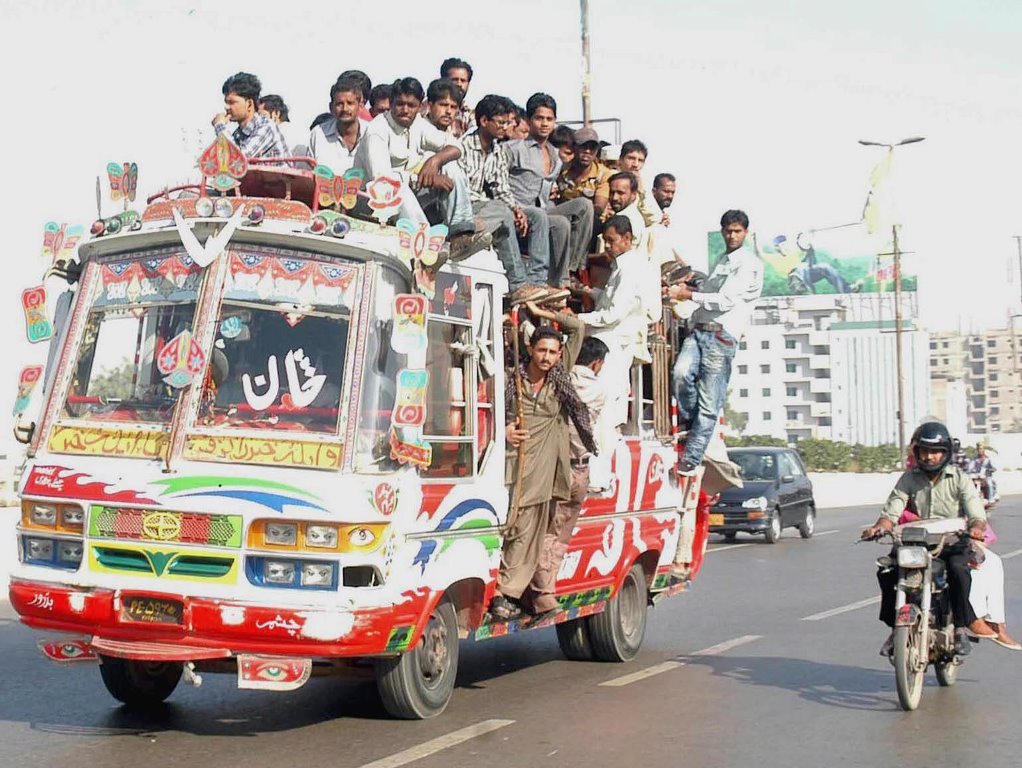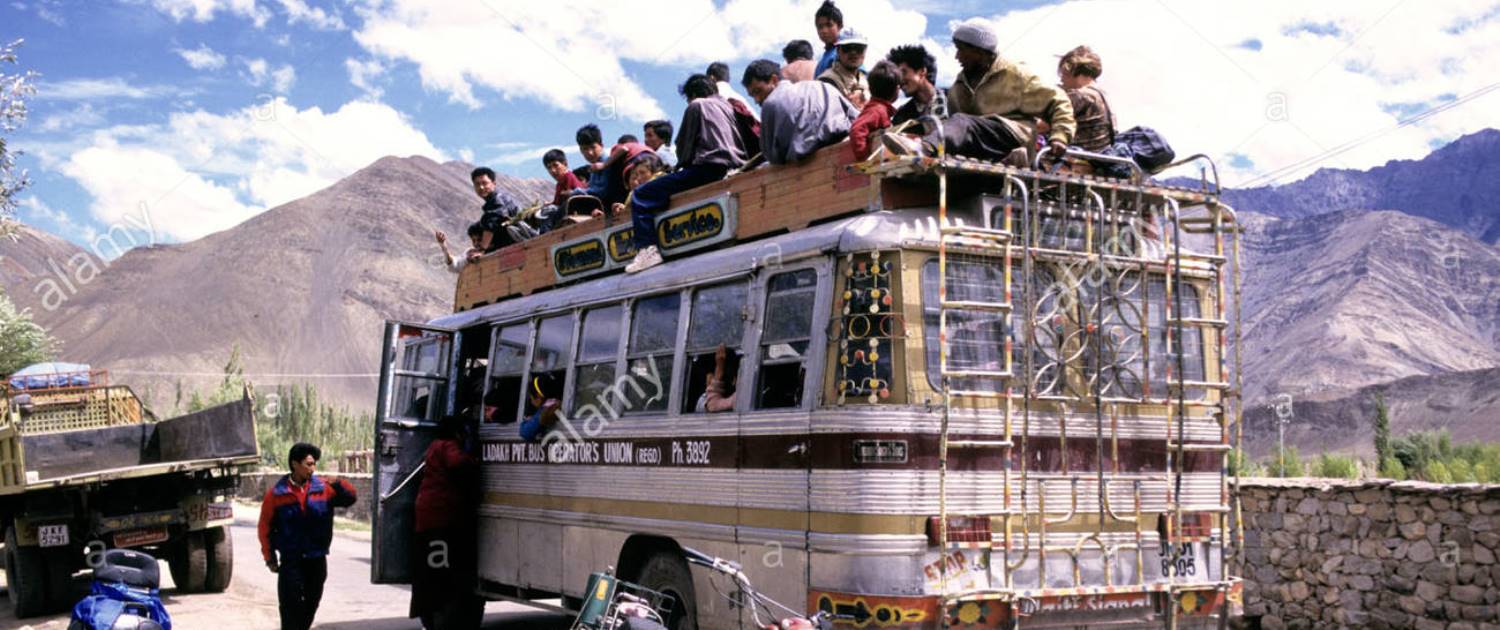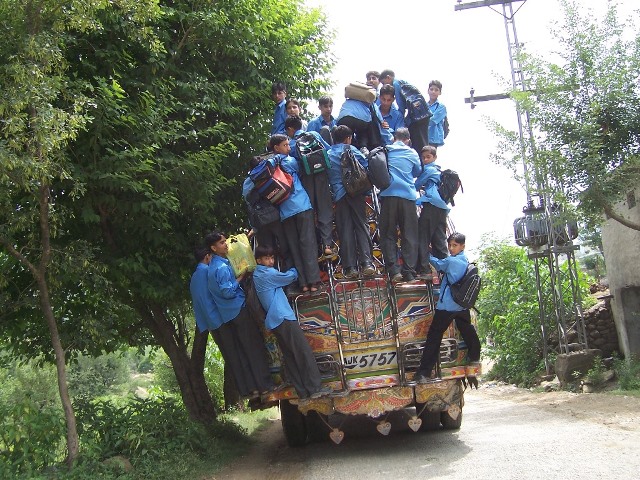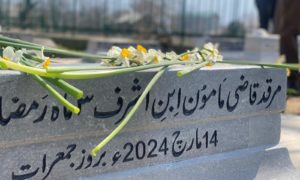Just the other day when I gave a ten rupee note to the bus conductor and he returned only four rupees back instead of the usual five, I wondered why it was so. His bus was still the same as it used to be. Then, why the extra one rupee? The seats are still made of wood under those floral covers, a likely reason of that knocked up lower back. The three seats aligned in a row still seem altered to give more space to the standing passengers. The screwed handles are still about to come off the hinge somewhat, which might just be the reason for people to grab each other each time the driver jams those brakes.
It’s been a few days since I have started to travel in these buses again, instead of taking share cabs, because I didn’t see the point in paying that extra money, when the condition of these so called cabs started to get uglier than the buses each passing day.
While standing in a bus, the passengers still stand a chance of moving themselves on being uncomfortable, but these jam-packed cabs don’t even leave scope for that, when the driver lets eleven passengers to hop in instead of nine.

(Picture used for representational purpose only)
Students who move back and forth every day in these cabs, complain of the same problems. “The share cab had really been a convenience, but in places like Kashmir it doesn’t take much time for things to change,” says a school student drenched in sweat.
Ruksana Mehraj, who is pursuing a post-graduate program from the University of Kashmir talks about how it’s neither comfortable to be seated, nor to stand in these buses. “Most of the times I just won’t fit into a seat. Either there is someone pushing against me from the side or I simply keep slipping off of the seat since it’s too tiny,” she says.
Ruksana complains about the suffocation she has to bear because the windows won’t go up. She also points out the risk of getting the arms crushed under the windows as the locks don’t fit.
In the absence of proper public transport, more than half of the population in Kashmir travels in local transport which is privately owned, but the condition of these buses look nothing like a private enterprise.

Picture used for representational purpose only
“I am in high school and I am ought to commute on a regular basis. I board three buses a day and it gets impossible to be seated in this private transport,” says Saba Shafi who is a student from Kothi Bagh Higher Secondary School.
Telling me more about her quandary journey and the things she has to go through every day, Saba makes me take a note of the ‘Ladies Special’ buses in which she has never traveled till date. “It was a relief to come to know about these buses. Thinking of the comfort and convenience it would offer I was quite happy in my mind. Now, I am waiting for this virtual happiness to come true,” she adds.
Saba and many of her friends live in the outskirts of Srinagar which isn’t in the route the Ladies special service covers.
Chief Minister Mehbooba Mufti led PDP-BJP coalition Government initiated a ladies special bus service last year, but the number of these buses is small, not enough to cover the routes most women in Kashmir take.
This much hyped bus by the government was reported to have stopped to ply on the roads and the authorities were said to have failed in ensuring if the buses were in service or not.
Denying the fact that the bus service in Kashmir is in despair, General Secretary Kashmir Transporters Welfare Association Mohammad Yousuf says, “the narrowing of the seats, the replacement of the internal parts by the drivers and the state you’re talking about was happening in the past. We have now started to replace TATA 407 with semi luxurious coaches.”
According to Yousuf, the initiative has already triggered and buses with certain specifications (like the seat should be thirty two inches side) are already plying on the roads. “We are doing whatever we can but it’s for the State Transport Authority to check and ensure the smooth travel, transportation and the condition of the buses,” he adds.
Yousuf also claims that the drivers willing to buy new buses, that would give the passenger the comfort and the convenience they deserve, would be helped.
With yearly inspection conducted by the Board of inspection under the RTO department, more than fourteen hundred mini buses are in service in Srinagar and are checked for basic facilities, officials claim.
The scenario on the ground however is very different. With most of these buses in a condition unfit for travel, and comfort being the last thing on the mind of the authorities, it does not seem that the passengers will have any relief any time soon.








